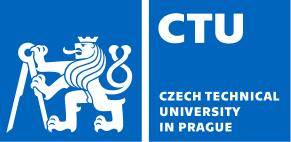About this course
Numerical simulations are increasingly being used to develop new and optimize existing products and devices. Numerical simulations can greatly reduce the number of prototypes needed and thus significantly accelerate and reduce development costs. Another sector where numerical simulations are used is a sector where it is difficult to verify ongoing physical processes (eg, heating the biological tissue under electrodes for direct brain simulation). Last but not least, based on numerical simulations, we can plan treatment where, based on knowledge of material properties, we can define the amount of power delivered to the device (eg radiofrequency ablation in oncology or cardiac surgery). Computer modeling involves the creation of geometry, setting of material properties and boundary conditions and, last but not least, the choice of differential equations, the method of discretization of the computing area and the processing of results. The accuracy of the results obtained, the length of calculations and the computational power requirements are very dependent on the numerical model setting. The lectures cover the most common problems in electrical engineering, thermics, mechanics, chemistry, acoustics and fluid dynamics. The acquired knowledge will be tested by the students when designing individual parts of devices and devices.
Learning outcomes
The course aims to introduce the possibilities offered by current numerical simulation of physical phenomena, particularly in relation to biomedical engineering. For these purposes, the COMSOL Multiphysics software platform will be used to perform numerical simulations of individual physical phenomena and their combinations. Furthermore, students will try to create a real anatomical 3D model using segmentation in Materialise Mimics and 3-Matic. This model will be used for numerical simulation in COMSOL or will be printed on a 3D printer.
Course requirements
The requirements for successful completion of the subject:
-
Creating and presenting a functional model in the COMSOL program on a topic chosen by the student from the list prepared by the lecturer
-
Submission of a two-page summary of one professional article dealing with the use of COMSOL Multiphysics in biomedicine
Resources
- [1] COMSOL Multiphysics (COMSOL AB, Stockholm, Sweden)
- [2] Reddy, J.N. (2006). An Introduction to the Finite Element Method (Third ed.). McGraw-Hill. ISBN 9780071267618.
Activities
lectures and exercises
Additional information
- Coordinating facultyCzech Technical University in Prague
- Contact a coordinator
- CreditsECTS 2
- Contact hours per week2
- InstructorsIng. Brunát Matouš, prof. Ing. Vrba David Ph.D., prof. Dr.-Ing. Vrba Jan M.Sc.
- Mode of instructionOnline - at a specific time
Offering(s)
Start date
23 September 2024
- Ends16 February 2025
- Term *Winter 2024/2025
- Instruction languageEnglish
Course is currently running
